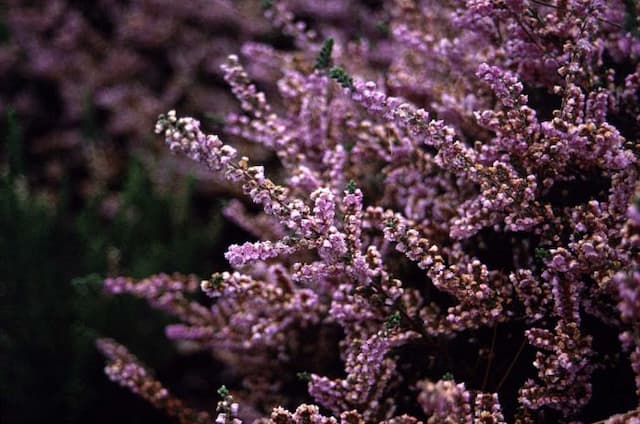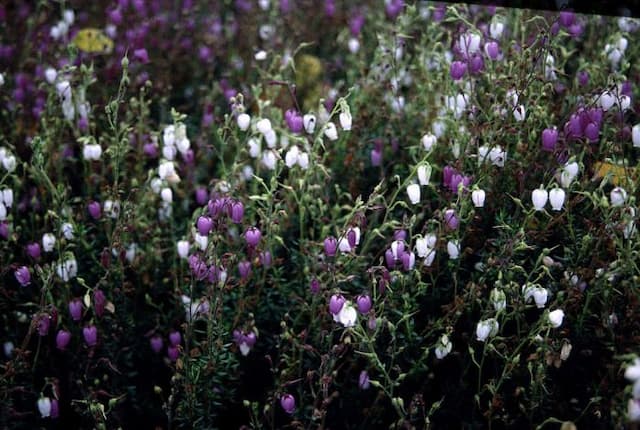Strawberry tree 'Compacta' Arbutus unedo 'Compacta'

ABOUT
'Compacta' is a small, dense evergreen shrub with red-brown bark and mid-green leathery leaves. Sprays of pink-tinged, white, urn-shaped flowers appear in autumn, together with the previous year's rough-skinned, red fruit, but it is often shy to flower and fruit
About this plant
 Names
NamesFamily
Ericaceae
Synonyms
Dwarf Strawberry Tree, Compact Strawberry Tree, Dwarf Irish Strawberry Tree
Common names
Arbutus unedo 'Compacta'.
 Characteristics
CharacteristicsLife cycle
Perennials
Foliage type
Evergreen
Color of leaves
Green
Flower color
White
Height
6-10 feet (1.8-3 meters)
Spread
6-10 feet (1.8-3 meters)
Plant type
Shrub
Hardiness zones
7
Native area
Mediterranean
Benefits
 General Benefits
General Benefits- Ornamental Value: Adds aesthetic appeal to gardens with its evergreen leaves, white flowers, and red berries.
- Compact Growth: Suitable for small gardens or limited spaces due to its compact size.
- Drought Tolerance: Once established, it can withstand periods of dry weather with minimal watering.
- Wildlife Attraction: Attracts bees, butterflies, and birds with its flowers and fruit.
- Low Maintenance: Requires minimal pruning and upkeep compared to other garden shrubs.
- Year-Round Interest: Provides visual interest throughout all seasons with its persistent foliage, flowers, and fruits.
- Edible Fruit: Produces strawberry-like fruits that are edible and can be used in jams and jellies.
- Cold Hardy: Can tolerate cooler temperatures, making it suitable for a range of climates.
 Medical Properties
Medical Properties- This plant is not used for medical purposes
 Air-purifying Qualities
Air-purifying QualitiesThis plant is not specifically known for air purifying qualities.
 Other Uses
Other Uses- The wood of Strawberry tree is dense and hard, making it suitable for making small wooden objects such as utensils, pipes, and craft items.
- The fruits can be used to make a unique and flavorful vinegar that can be used in cooking or salad dressings.
- Because of its high pectin content, the fruit is also useful in making firm jellies, marmalades, or fruit leather.
- The nectar from the flowers is sometimes harvested by beekeepers to produce a rich, flavorful honey.
- The slow growth and compact size of the 'Compacta' cultivar make it a good candidate for bonsai cultivation.
- In landscapes, the Strawberry tree can be pruned into a formal hedge or topiary for decorative purposes.
- The bark of the Strawberry tree has an interesting texture that can be used in nature-inspired art or as a natural crafting material.
- Leaves from the Strawberry tree can be steeped to create a natural dye for fabrics or yarns.
- The flowers provide a source of food for pollinators, making the Strawberry tree a beneficial choice for butterfly and bee gardens.
- During the holidays, branches with berries and flowers can be used to create festive, natural decorations and wreaths.
Interesting Facts
 Feng Shui
Feng ShuiThe Strawberry Tree is not used in Feng Shui practice.
 Zodiac Sign Compitability
Zodiac Sign CompitabilityThe Strawberry Tree is not used in astrology practice.
 Plant Symbolism
Plant Symbolism- Endurance and Strength - The Arbutus, commonly known as the Strawberry Tree, is an evergreen species symbolizing endurance due to its ability to withstand harsh conditions and poor soils.
- Balance and Moderation - As the Strawberry Tree bears flowers and fruits simultaneously, it symbolizes balance and moderation in life, reminding us to handle different aspects harmoniously.
- Eternal Knowledge - With its perennial nature and evergreen leaves, the Strawberry Tree is often associated with eternal wisdom and the continuous pursuit of knowledge.
- Protection - In some cultures, the Strawberry Tree is believed to offer protection due to its dense foliage and long-lasting presence in the landscape.
 Water
WaterThe Strawberry Tree should be watered deeply, with about 1 to 2 gallons every week or two during the growing season, depending on the weather conditions. Over the winter, watering can be reduced significantly and done only when the soil appears dry, as the plant is more drought-tolerant once established. It's important to avoid overwatering, as this can lead to root rot. Allow the topsoil to dry out between waterings, and when you do water, do so at the base of the plant to keep leaves and fruit dry.
 Light
LightThe Strawberry Tree thrives best in full sun to partial shade. An ideal spot would be one where it receives direct sunlight for at least 6 hours a day, but it can also tolerate some shade, especially in hotter climates. Avoid placing it in deep shade, as this can impede its growth and fruit production.
 Temperature
TemperatureThe Strawberry Tree prefers a moderate climate and will do well in temperature ranges between 50°F and 80°F. It can tolerate a minimum temperature of down to about 20°F and a maximum of around 100°F, but for optimal growth, keeping it within the preferred range is ideal. Frost damage is possible but the plant is fairly robust and can usually recover from light frost.
 Pruning
PruningPrune the Strawberry Tree to maintain its shape, remove any dead or crossed branches, and encourage healthy growth. Pruning should be done in late winter or early spring before new growth starts. It does not require heavy pruning; light annual trimming is often sufficient. Pruning can also be done after fruiting to maintain its 'Compacta' form.
 Cleaning
CleaningAs needed
 Soil
SoilThe best soil mix for Strawberry Tree should be well-draining with loamy and sandy components. It requires a slightly acidic to neutral pH, ranging from 6.0 to 7.5.
 Repotting
RepottingStrawberry Trees should be repotted every 2-3 years to refresh the soil and accommodate root growth.
 Humidity & Misting
Humidity & MistingStrawberry Tree prefers moderate to high humidity levels but is tolerant of a wide range, making it adaptable to most environments.
 Suitable locations
Suitable locationsIndoor
Place in bright, indirect light and avoid dry air near heaters.
Outdoor
Choose a sunny spot with shelter from harsh winds.
Hardiness zone
7-10 USDA
 Life cycle
Life cycleArbutus unedo 'Compacta', commonly known as the Compact Strawberry Tree, begins its life cycle with seed germination, which is often erratic and can be facilitated by stratification or scarification to break seed dormancy. As a seedling, the plant establishes a root system and begins to develop its evergreen foliage, entering a juvenile stage where it slowly matures into an adult plant. This compact shrub or small tree reaches maturity after several years, at which point it begins to flower annually, typically in the fall, displaying clusters of white or pink urn-shaped flowers. Following pollination, the flowers give rise to red, strawberry-like fruits, which take about 12 months to mature, thus fruit and flowers can be seen simultaneously on the plant. The fruits, while edible, are not particularly palatable and are often left for wildlife consumption. The Compact Strawberry Tree can live for many decades, during which it will continue this cycle of flowering and fruiting, while also undergoing periods of vegetative growth where it can reach heights of 6-10 feet with a broad, bushy habit.
 Propogation
PropogationPropogation time
Spring-Early Summer
The most popular method of propagating the Strawberry Tree, specifically the 'Compacta' variety, is through seed germination. For optimal results, seeds should be sown in the fall directly after harvest to facilitate natural stratification. However, they can also be cold stratified for up to 3 months before planting in colder climates. The seeds are sown in a well-draining, sandy seed mix, lightly covered with soil, and kept moist. Germination can be slow and erratic, often taking several months. Consistent moisture and a stable temperature range around 70°F (21°C) are crucial for encouraging sprouting. Once seedlings emerge and grow to a manageable size, they are transplanted into individual pots and grown on until they are ready to be planted out into their permanent positions.









